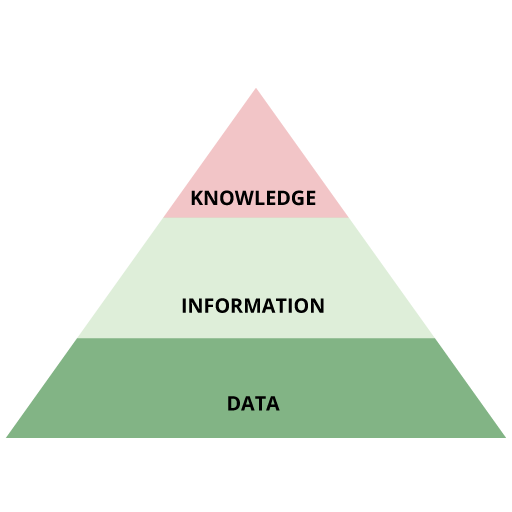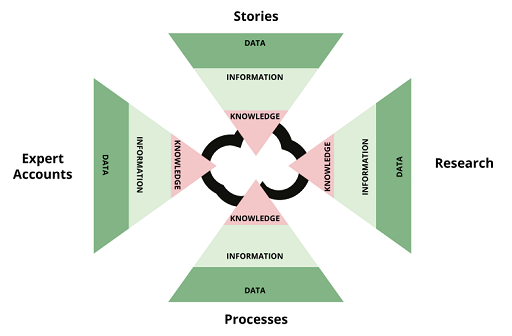2.2 Evidence Café process and discussion objects
For an Evidence Café to function appropriately there are two key components that must be included:
‘Champions’ (who facilitate and moderate the Evidence Café) manage the process of knowledge exchange and act as unbiased mediators to ensure different viewpoints are respected. It is important that these champions provide an equal platform for the different stakeholder perspectives regardless of where they are from, their job role and the context of their work.
A discussion object is an artefact that can be produced on paper, in a technical application or through a series of different resources e.g. Post-It notes. The discussion object is tailored to the specific topic’s needs, and facilitates meaning-making and the development of changed understandings for the group.
A good discussion object will enable all viewpoints to be added and valued equally, ensuring the Evidence Café is productive for all involved. It is important when coordinating the Evidence Café that you share the final conclusions results from the discussions and the discussion objects with the participants to support effective sustainable impacts from the activity. You will learn more about these in Unit 5.
It is important when planning an Evidence Café that you consider who the participants are and what they might bring to the café in terms of different types of evidence. Doing this should help you decide what an appropriate discussion object would be.
Figures 2.1 and 2.2 are two examples of discussion objects that can be used in an Evidence Café, which we will discuss in more detail in Unit 5.
The Evidence Pyramid

Figure 2.1 The Evidence Pyramid
Show description|Hide descriptionA pyramid diagram showing the relationship between data, information and knowledge. At the bottom of the pyramid, in the largest segment is ‘data’, in the middle is ‘information’, and at the top of the pyramid, indicating the smallest proportion, is ‘knowledge’. This represents the levels of analysis that evidence is taken through where data has less analysis and complexity than information or knowledge. This also reveals why there is more data (at the bottom of the pyramid) than there is knowledge at the top.
The evidence typology

Figure 2.2 The evidence typology
Show description|Hide descriptionA four-sided square pyramid viewed from above has been disassembled into four triangles representing each side of the pyramid. In the middle is a thought cloud. The four triangles are labelled Stories, Research, Expert Accounts and Processes to represent different possible types of evidence. Each of these triangles represents four ‘evidence pyramids’ (see previous image long description) with each triangle being sub-divded into three levels of analysis, moving from data at the outside, to information and finally knowledge closest to the centre.


